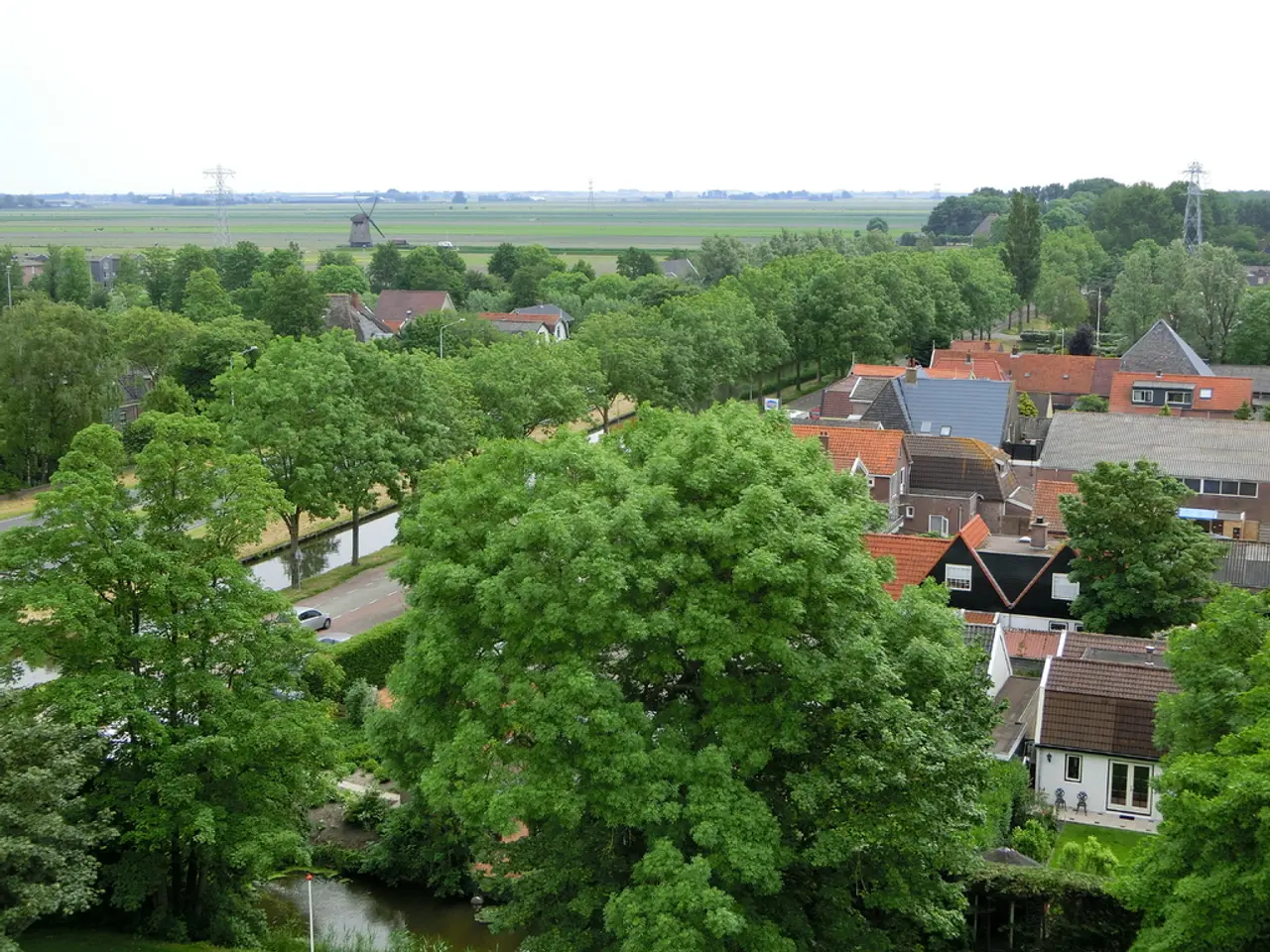Windmill Community in the Netherlands Faces Controversy Due to Excessive Tourism
In the picturesque village of Zaanse Schans, near Amsterdam, a contentious issue is unfolding. With over 2.6 million tourists flocking to the area annually, local authorities are proposing an entrance fee to alleviate the pressure on the centuries-old buildings and generate funds for preservation[1][2][5].
Currently, Zaanse Schans remains free to enter, but the influx of tourists—often arriving via buses—has caused crowding in the relatively small area, putting the historic buildings under "severe pressure" and threatening their long-term survival without sufficient maintenance resources[1]. The council insists that charging an entrance fee is essential to fund preservation efforts and maintain the area's historic value.
The local economy heavily depends on tourism, causing concern among some residents that implementing a fee might negatively affect businesses reliant on visitor flow, while others support it to protect the heritage and quality of life[1]. Ingrid Kraakman, a local businesswoman, fears that the proposed 17.50 euro ($20) fee could reduce her cheese shop's budget for on-site purchases, as her business is heavily reliant on tourist spending[6].
However, Kraakman and her supporters' efforts to delay the entrance fee through a referendum have been unsuccessful so far, with over 2,000 signatures collected[7]. On the other hand, many tourists, like Spanish visitor Robert Duque, welcome the idea of an entrance fee, believing it could help reduce tourist volumes and improve the overall experience by staggering the arrival of guests[8].
Notably, despite the buildings appearing centuries old, Zaanse Schans as a tourist attraction is relatively recent, with many structures having been relocated to the site after World War II to preserve traditional Dutch timber construction techniques[1]. The site was officially opened by Queen Juliana in 1972[9].
The debate centres on balancing heritage preservation and economic impact. The entrance fee is seen as a necessary step to mitigate overtourism and secure funding for conservation, with the goal being to sustainably manage visitor numbers while maintaining Zaanse Schans’ cultural and economic vitality[1][3]. Some local officials, however, view the proposed deadline of 2026 as a "moonshot," with potential delays in implementing the fee being considered[10].
In conclusion, the issue of Zaanse Schans' entrance fee is a complex one, requiring careful consideration of both the economic and cultural implications. As the village continues to be a must-see for visitors to the Netherlands, finding a solution that balances the needs of the local community, businesses, and preservation of the heritage site will be crucial.
- The proposed entrance fee for Zaanse Schans, if implemented, could potentially affect the lifestyle of business owners like Ingrid Kraakman, who heavily rely on tourist spending, as it may limit their budget for on-site purchases.
- Some tourists, such as Robert Duque, welcome the idea of an entrance fee in Zaanse Schans, as they believe it could improve their travel experience by reducing tourist volumes and ensuring a better-maintained historic site.




